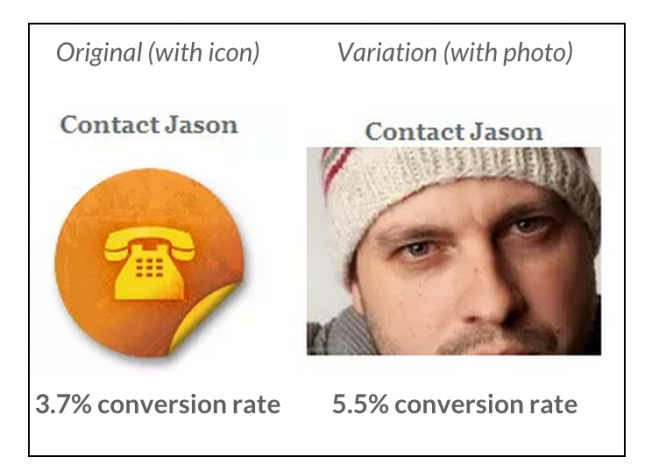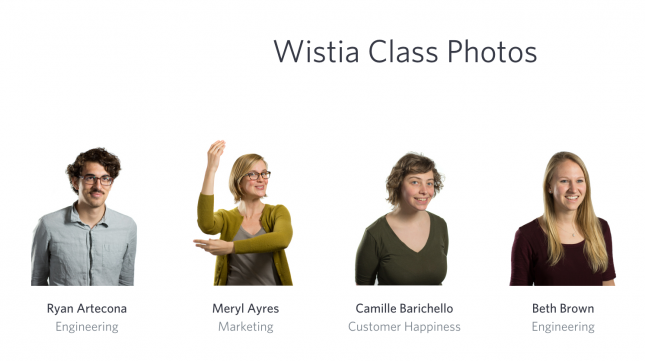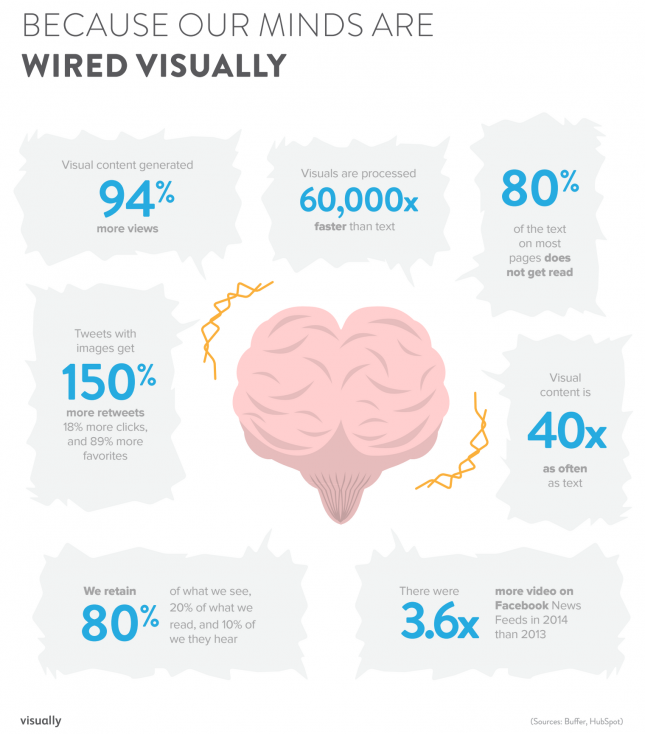Download this post by entering your email below
High-quality visual content can have a major impact on your conversion funnel. From studying brain scans to tracking eye movements, researchers have discovered that visual content is simply processed differently than text. Visuals communicate more information, more effectively. 
Part physiology and part art, the reasons for this reality are varied. What it means is that no matter where you market your products or services—from websites to billboards to print—including visuals should be a core tactic your communications strategy. In this post, we’ll explore a few principles driven by statistics that help us understand why visuals are such a big driver for sales and content marketing.
Photos and videos appeal to our brains
Let’s get technical for a moment and acknowledge the fact that we’re built to process visual cues far better than text-based ones. Quoting from a Nieman Reports interview with Marcel Just, director of the Center for Cognitive Brain Imaging at Carnegie Mellon University:
“Processing print isn’t something the human brain was built for. The printed word is a human artifact. It’s very convenient and it’s worked very well for us for 5,000 years, but it’s an invention of human beings. By contrast Mother Nature has built into our brain our ability to see the visual world and interpret it. Even the spoken language is much more a given biologically than reading written language.”
That reality means photos, videos, and related tech gadgets play well with human audiences overall—not just humans in a specific demographic. Another study, by 3M, put this observation in more measurable terms, finding that 90% of the information transmitted to the brain is visual. Further, visuals are processed 60,000 times faster than text. You would have finished reading this article two minutes ago if it was an infographic! Here are a few more neuroscience nuggets in a more digestible form:
Put a bird face on it
As long as there’s been A/B testing online, there have been a lot of people trumpeting the effectiveness of using faces on landing pages and other content. This early study by VWO dug up some great academic research before testing it in the wild. Their findings? Faces rule: 
A deeper example comes from this awesome Unbounce.com roundup of research pointing to the power of imagery which includes the human face. They’ve found that images generate empathy and improve conversion rates among viewers. In an example that really resonates, the study looks at the employee photos on Wistia, a video hosting and marketing firm: 
The faces by themselves make a warm introduction to the company, but as you mouse over each one on the Wistia site, they jump to life (like the second image from the left), further humanizing the company and delighting the viewer.
Go visual in social
The manic, ephemeral nature of social media means you only have a brief opportunity to catch your audience’s attention. A link from a friend, a cat meme, or a message from mom are all lined up after your post, so you’ve got to make the most of the eight second attention span you’ll get (if your posts get noticed at all). When you include visuals, your performance improves dramatically: Photos are liked twice as frequently as text, and videos are liked 12 times as often (per Sprout Social). Social media is also a great delivery platform for visually-driven sales. For example:
- 93 percent of Pinterest users use the platform to plan purchases [Shopify]
- Ad recall, brand awareness and purchase consideration experience lift within the first second of a Facebook video ad playing [Facebook]
- Consumers view native ads such as those on social media 52 percent more than banner ads [Right Mix Technologies]
Sites like Social Media Impact explain how you can capitalize on Pinterest visuals and visuals on other platforms to drive sales. (Even developers can tap Pinterest for a buck, Bloomberg reports via InternetRetailer.com.)
Strong visual content boost your credibility
Content marketers can support their sales teams and build their brands by communicating a sense of quality through visual content, too. When Stanford Web Credibility compiled a list of the 10 most critical factors affecting perceived credibility of websites, number six on the list was a professional-looking presentation. “We find that people quickly evaluate a site by visual design alone,” the researchers note. “When designing your site, pay attention to layout, typography, images, consistency issues, and more. Of course, not all sites gain credibility by looking like IBM.com. The visual design should match the site’s purpose.” To dive deeper, check out this March 2015 post from Jeff Bullas articulating 10 things content marketers should do right now to capture audience members’ attention, boost credibility and retain genuineness.
Images create emotional connections
Visuals also empower you to make strong associations between your product offering and other things. Let’s say you’re Cisco and you have a super-smart security system that might be a tad hard to explain. You can make claims about having the most robust security, then watch eyes glaze over as you get into the mundane tech specs. Or you can appeal to IT professionals’ inner bad boys with something like this:
Without knowing what this hashtag is talking about, I’m totally mesmerized by it. I see a confident dude doing something simple, like bouncing a tennis ball. This guy is totally on top of things. Everything around him is working like clockwork. And he’s fearless. Bottom line, this Vine says way more than the 50 characters of text in a banner ad ever could. In the way that this campaign has helped Cisco improve its reach, you’ll find that a small shift on the visual marketing front can unleash a tidal wave of engagement and, ultimately, sales. When you’re trying to get noticed in the frenetic online world, you’ll grab more eyeballs, increase your reach, and make a stronger impression by using visual content. And if you play your cards right, you might even boost your sales close to 13,600 percent, like this video did:
Nate Birt is a multimedia journalist, social media enthusiast and copy editor with experience at a variety of print and digital publications, and a Certified Journalist at the Visually Marketplace. Follow him on Twitter at @natebirt.
2024 State of Marketing Report
Your golden ticket to crush your goals with data-driven insights!
2024 State of Marketing Report
Your golden ticket to crush your goals with data-driven insights!








